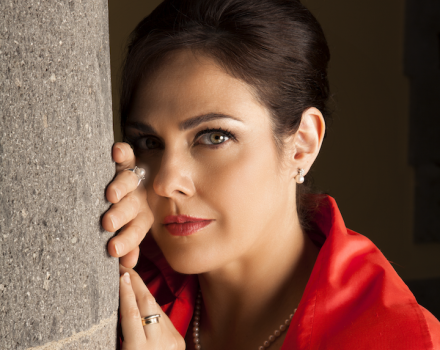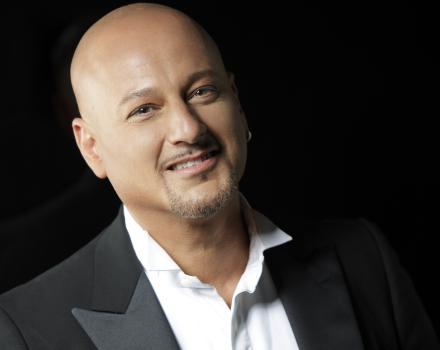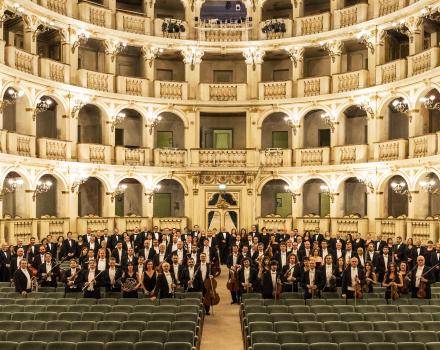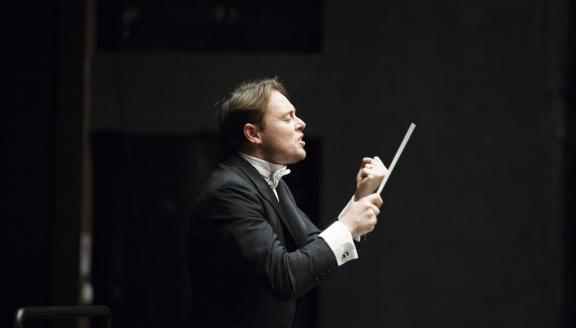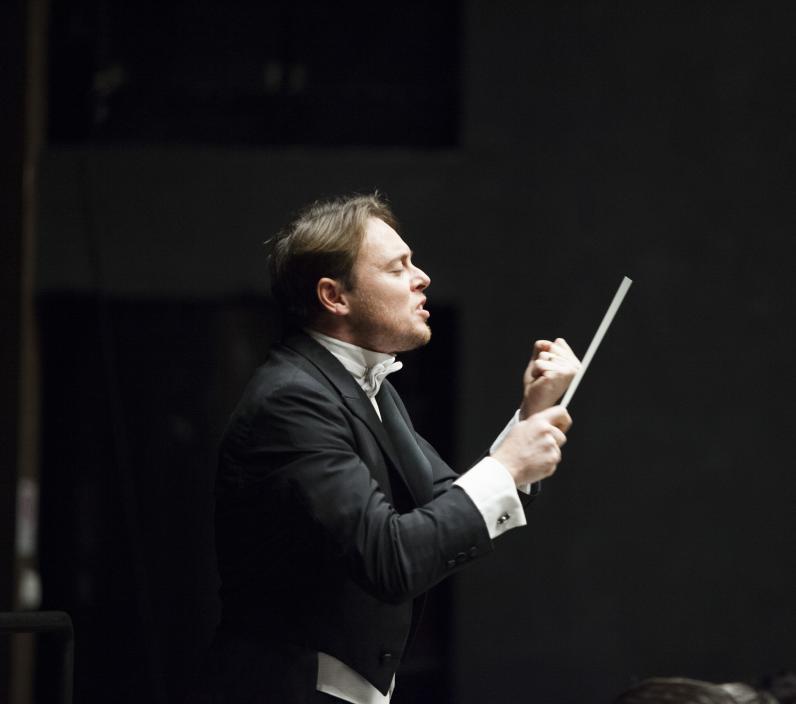

Stabat Mater
Michele Mariotti conducts in Bologna one of the most beautiful Stabat Mater ever written with a high-class cast.
Cast
|
Sopranos
|
Yolanda Auyanet
|
|---|---|
|
Mezzo-soprano
|
Veronica Simeoni
|
|
Tenor
|
Antonino Siragusa
|
|
Bass
|
Marko Mimica
|
|
Chorus
|
Teatro Comunale di Bologna
|
|
Orchestra
|
Teatro Comunale di Bologna
|
| ... | |
|
Music
|
Gioachino Rossini
|
|---|---|
|
Conductor
|
Michele Mariotti
|
| ... | |
Video
The story
1. Introduction
Soloists (SSTB) & Chorus
The grieving Mother stood
weeping by the Cross
where hung her Son.
2. Aria (Tenor)
Her spirit groaning,
saddened and grieving
a sword has pierced.
O how sad and afflicted
was that blessed
Mother of the Only-Begotten!
Who mourned and grieved
And trembled, when she saw
The punishment of her glorious son.
.
3. Duet (Soprano I & Soprano II)
Who is the man that would not weep
if he saw the Mother of Christ
in such torment?
Who could fail to feel sorrow
to regard the merciful Mother
grieving with her son?
4. Aria (Bass)
For the sins of His people
she saw Jesus in torment
and submitted to the scourge.
She saw her sweet offspring
forlorn in dying
as He yielded up His spirit.
5. Chorus & Recitative (Bass)
Ah, Mother, fountain of love,
to feel the force of grief
grant that I may mourn with you.
Grant that my heart may burn
in loving Christ, God,
that I may please Him.
6. Quartet (Soloists, SSTB)
Holy Mother, grant me
that I fix the wounds of the crucified
firmly to my heart.
Of your wounded son
who deigned to suffer for me
let me share the pain.
Let me truly weep with you,
grieve over the crucified,
as long as I live.
To stand by the cross,
willingly to join with you
in mourning I desire.
Virgin glorious among virgins,
be not now harsh with me,
make me to weep with you
7. Cavatina (Soprano II)
Let me bear Christ's death,
let me share his passion
And revere his blows.
Let me be wounded by his blows,
to be drunk with this cross
Out of love for your Son.
8. Aria (Soprano I) & Chorus
So fired and consumed with flames,
through you, Virgin, may I be defended,
in the day of judgement.
Let me be guarded by the cross,
strengthened by the death of Christ
cherished by grace.
9. Quartet (Solilist, SSTB) & Chorus
When the body shall die,
grant that my soul be given
the glory of Paradise.
10. Finale - Soloists & Chorus
For all eternity.
Amen.
Insights
5 things to know about Rossini’s Stabat Mater
1° What is a 'Stabat mater'?
In Latin, 'stabat mater dolorosa' means 'the sorrowful mother was standing' and refers to the biblical scene of the Virgin Mary weeping at the foot of the cross where her son was crucified. The text dates from the 13th century and has been attributed to the Italian Franciscan Jacopone da Todi. It is a sequence that has inspired many composers throughout the history of both ancient and contemporary music.
2° A particular period in the life of the composer
After he composed his opera William Tell, which was premiered in 1829 at the Paris Opera, Rossini had something of a creative block: he did not write any opera for nearly 40 years! The reasons are unclear. Writing William Tell required more energy than any of his previsous works and some of his letters written at that time betray his desire to leave the world of opera. Tired, sick, diminished by the death of his father and his mother, Rossini also had independent means, so he did not need to compose for a living. It was at the beginning of this period that he composed his Stabat Mater, between 1831 and 1841.
3° Two versions of the Stabat Mater
It was during a trip to Spain in 1831 with his friend, the banker Alexandre Aguado, that Rossini was commissioned to write a Stabat Mater by State Councilor Fernandez Varela. At first, Rossini wrote only half of the score and then asked his friend Giovanni Tadolini, especially because he was ill, to complete it. It was not until 10 years later that Rossini, especially under the pressure of his publisher Eugène Troupenas, decided to completely recompose the work done by Tadolini, giving rise to what could be called a second version of the work.
4° An exceptional conductor...
The Paris premiere of Rossini's Stabat Mater took place at the Italian theatre in Paris in 1842. The Italian premiere was in Bologna and the conductor was none other than... Donizetti! Both events were a great sucess. Donizetti wrote: 'The enthusiasm is impossible to describe. Even at the last rehearsal, which Rossini attended in the middle of the day, he went home amid the loud applause of more than 500 people. The same thing the first night, under his window, since he had not appeared in the hall... '. Rossini was very moved that Donizetti should conduct his music.
5° A very special event at the Teatro Comunale di Bologna
On the occasion of the 150th anniversary of Rossini's death, conductor Michele Mariotti and soloists Yolanda Auyanet, Antonino Siragusa, Veronica Simeoni and Marko Mimica present the composer's Stabat Mater in the same magnificent hall of the Archiginnasio Library where the work was given for the first time, March 18, 1842. It is known as the Stabat Mater Hall.
Gallery
